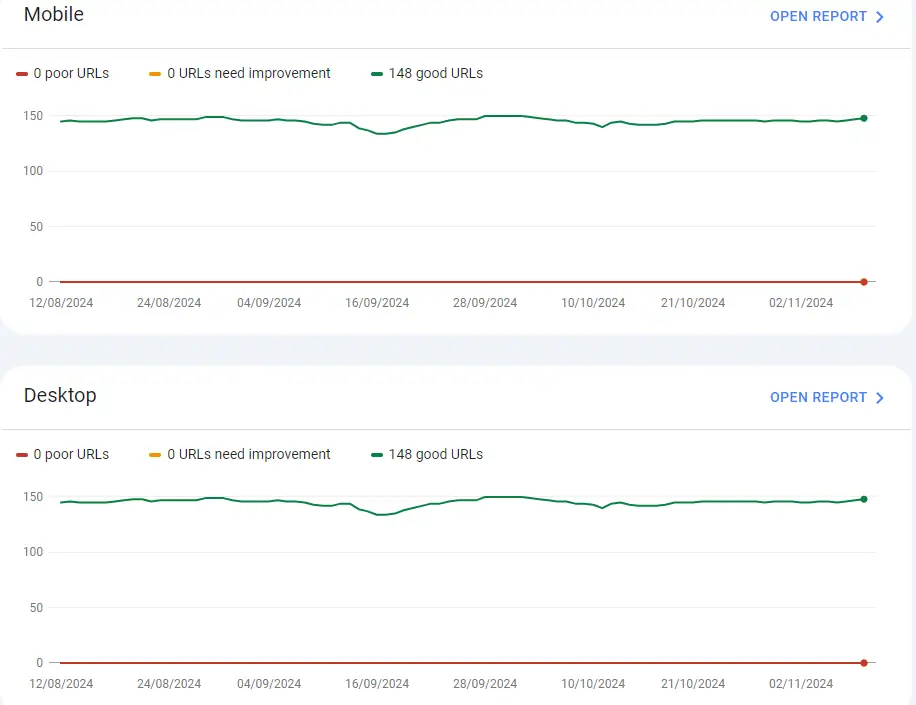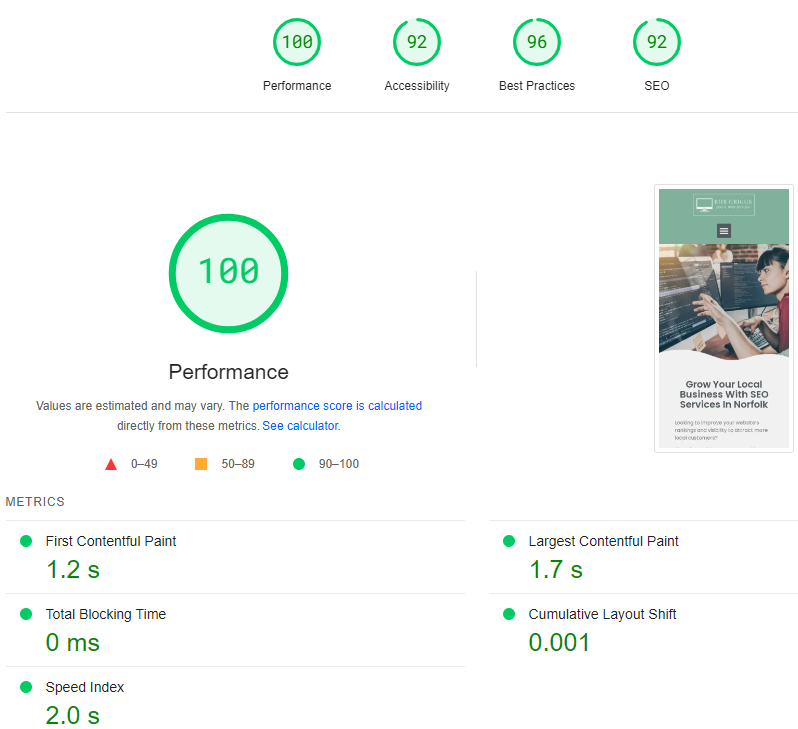Page speed is more than a technical metric—it’s a critical factor in both search engine rankings and user satisfaction. Improving page speed can lead to better rankings in Google, enhanced user experience (UX), and higher conversion rates. This guide explains why page speed matters and how it impacts your website’s success.
What is Page Speed?
Page speed refers to the time it takes for a web page to fully load, including all elements such as text, images, videos, and interactive features. Google considers page speed a ranking factor, making it a crucial component of the SEO process. However, page speed isn’t just important for search engines—it’s essential for user experience and conversions.
How Google Measures Page Speed with Core Web Vitals
Google evaluates page speed using Core Web Vitals, a set of metrics that assess key aspects of user experience on a website. These metrics, which are essential for SEO, include Largest Contentful Paint (LCP), First Contentful Paint (FCP), Cumulative Layout Shift (CLS), and Total Blocking Time (TBT). Each metric reflects a different aspect of page performance:
- Largest Contentful Paint (LCP): Measures the time it takes for the main content (like images or text blocks) to load. A good LCP score is under 2.5 seconds.
- First Contentful Paint (FCP): Tracks the time until the first visible element appears on the screen. An ideal FCP is around 1.8 seconds or faster.
- Cumulative Layout Shift (CLS): Focuses on visual stability by measuring unexpected shifts of page elements as they load. A score below 0.1 is optimal, minimising disruptions.
- Total Blocking Time (TBT): Measures the time during which the page is unresponsive to user input due to JavaScript execution. Lower TBT values mean a faster, more interactive experience.
CRUX Field Data in Google Search Console (GSC)
Google Search Console (GSC) uses CRUX (Chrome User Experience Report) field data to assess Core Web Vitals. This data reflects real user experiences across various devices and connection types, offering valuable insights into how your site performs under typical conditions. While GSC relies on actual field data from users, it can take longer to reflect recent site changes, as it’s based on cumulative data collected over time.

PageSpeed Insights: A Useful Tool for Lab Data
PageSpeed Insights (PSI) is another valuable tool for testing page speed, offering lab data simulations of your website’s performance. PSI can highlight areas for improvement, but it doesn’t use real-world user data, meaning it may not capture the full picture of your users’ experiences. Instead, it provides a snapshot of performance in a controlled environment, which can help diagnose issues but should be used alongside field data from GSC.

Understanding the Colour-Coded Scoring System
Each Core Web Vital metric uses a colour-coded rating system to indicate performance:
- Green (Good): Indicates the page is performing well for that metric, supporting a positive user experience and SEO benefits.
- Yellow (Needs Improvement): Signals areas where performance could be improved, although it’s not critically affecting user experience.
- Red (Poor): Highlights poor performance, which can lead to slower load times, higher bounce rates, and potentially lower rankings.
Optimising for these Core Web Vitals using insights from both CRUX field data and PSI can enhance page speed, directly improving user satisfaction and search rankings.
Why is Page Speed Important for SEO?
Google prioritises websites that load quickly because it wants to provide the best experience for its users. A faster-loading page can improve your SEO in several ways. First, Google tends to rank faster websites higher, as they provide a better experience for users. Secondly, quick-loading pages make it easier for Google’s crawlers to index more content on your site, improving its overall visibility in search results. A faster page also means visitors are more likely to stay and engage with your content, which positively impacts bounce rates and can contribute to improved rankings.
The User Experience Benefits of Fast Page Speed
Beyond its effect on SEO, page speed plays a significant role in user experience. People expect web pages to load almost instantly, and when they don’t, they’re more likely to leave, costing you potential leads or sales. Fast-loading pages provide visitors with immediate access to content, reducing frustration and encouraging them to stay. This is especially important for mobile users, as mobile browsing often relies on varying network conditions. A fast-loading site enhances engagement, making visitors more likely to read, watch, or interact with your content.
How Page Speed Affects Conversions
Page speed doesn’t only keep users on your site—it can also drive conversions. A slow website risks losing potential customers who may leave before exploring your offerings. Faster page speeds lead to fewer abandoned shopping carts, better form completion rates, and increased trust. Visitors perceive a fast, responsive site as more professional, making them more likely to convert.
How to Improve Your Page Speed
There are several effective ways to enhance page speed, improving both rankings and user experience:
- Implement Lazy Loading: Lazy loading delays loading images and videos until they’re visible in the user’s viewport. This reduces initial load times and prioritises content that users see first, improving the browsing experience.
- Optimise Images: Use compressed formats like WebP to reduce file sizes without sacrificing quality. Large, uncompressed images can significantly slow down page load times, so optimising images is essential for maintaining a fast, efficient website.
- Enable Browser Caching: Caching stores files locally on the visitor’s device, allowing returning users to experience faster load times. By enabling caching, you reduce the need for browsers to reload all elements every time a visitor returns to your site.
- Minify Code: Remove unnecessary characters, spaces, and comments from CSS, JavaScript, and HTML code. This process, known as minification, reduces file sizes and speeds up the loading process, resulting in a smoother user experience.
- Use a Content Delivery Network (CDN): A CDN distributes your content across multiple servers worldwide, allowing users to load pages from the server closest to their location. This reduces latency and improves loading times, especially for visitors located far from your primary server.
- Reduce Redirects: Too many redirects create additional HTTP requests, which slow down the user experience. Minimising redirects streamlines the loading process and ensures visitors reach their desired pages faster.
- Upgrade Your Hosting Provider: Choose a quality hosting provider with optimised servers and resources to support faster load times. Upgrading your hosting plan can significantly improve your site’s performance, especially during high-traffic periods.
Page Speed and the SEO Process
Improving page speed is an essential part of the SEO process. A faster website not only improves rankings but also boosts user satisfaction and drives conversions. By making page speed a priority in your SEO strategy, you set your website up for long-term success.
Benefits of a Fast Website: Recap
To summarise, a fast-loading website offers several advantages. First, it has a better chance of ranking well on Google, as page speed is a key ranking factor. A faster site also keeps visitors engaged, which lowers bounce rates. When page speed is optimised, conversion rates improve, as users are more likely to complete actions like purchases or form submissions. Most importantly, a fast website provides a positive user experience, building trust and encouraging repeat visits.
Start Improving Your Page Speed Today
Page speed is a foundational aspect of SEO, offering benefits that go beyond ranking improvements. It enhances user experience, builds trust, and drives conversions. If you’re ready to elevate your website’s performance, begin by focusing on page speed. For more on how page speed fits into a comprehensive SEO strategy, check out my SEO Process page.
Optimising page speed may require time and effort, but the outcomes—higher rankings, better engagement, and increased conversions—make it worthwhile. Start improving your site today to enjoy the long-term benefits of a faster, more user-friendly website.
Need Help With Your SEO Campaign?
If you need help with your SEO, get in touch!
With more than 16 years experience as an SEO in both consultancy and agency roles, I have the knowledge to propel your site to the top of rankings.


